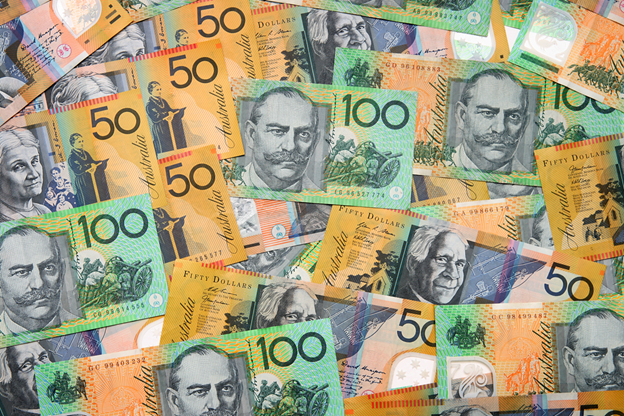What is Narrow Money?
Narrow money is classified as a form of money supply. It comprises all forms of physical currencies such as coins and notes, demand deposits and other liquid assets, and held by a country's capital bank. Narrow money is referred to as M1 (M0 + demand accounts) in the United States and M0 in the United Kingdom and Australia. This is the most accessible currency in the financial market because of its liquidity and, therefore, only limited to paper currency, coins and demand deposits.
The supply of money is measured from narrow to broad. The narrowest form of money is known as M0, while the broadest form is known as M4. However, the classification of narrow and broad money varies from one country to another. The most accessible form of money that can be easily spent is known as narrow money.
Summary
- The most accessible form of money that can be easily spent is known as narrow money.
- Broad money is another classification of money supply in an economy. It includes all forms of liquid assets and includes the less liquid forms of the money supply.
- The supply of narrow money is essential for analysing the economy of that nation.
- The analysis of narrow money essential for monetary policies can help predict and manage inflation or interest rates.
Frequently Asked Questions (FAQs)
How can the concept of Narrow Money be explained?
Narrow money refers to the most liquid form of money supply such as currency notes, coins, demand deposit and other liquid assets. Narrow money is the most accessible form of money due to its high level of liquidity,
Narrow money has been derived from the concept of M1/M0, which is the most liquid form of asset and forms the fundamental method of currency exchange in an economy. Narrow money is readily available for any type of transaction and settlement of deals.
Whether it is long-term or short-term, the supply of liquid cash does have an impact on the economy of a nation.

Image source: © Ashwin82 | Megapixl.com
What is Broad Money?
Broad money is another classification of money supply in an economy. It not only includes all forms of liquid assets but also includes the less liquid forms of the money supply. Broad money is denoted by M2, M3 and M4 depending upon the level of liquidity.

Image source: © Nito100 | Megapixl.com
It is very easily identified mainly because it is very inclusive and flexible in nature. It includes all forms of liquid assets and cash equivalents that could be easily converted into cash. The most common example of broad money is the treasury bills.
How is Broad Money different from Narrow Money?
Narrow money is denoted by M0 or M1 in certain countries, whereas broad money is denoted by M2, M3, and also M4. Narrow money is the most liquid form of money readily available to any individual. It could be the AU$10 present in your wallet right now. It could also be the AU$5000 deposited in your savings account at this moment. However, broad money is the one that takes a longer time to be converted into cash. Any amount that takes more than 24 hours to mature is known as broad money.
What is the significance of narrow money?
Narrow money is a significant component of the economy of every nation. The supply of narrow money is essential for analysing the economy of that nation. It is a parameter to evaluate the economic performance of a nation. Therefore, it is imperative to understand the concept of narrow money in order to differentiate it from broad money while carrying out the analysis.
Every narrow money is broad money but, every broad money is not narrow money. Thus, one needs to gain proper experience to be able to identify the supply of narrow money. Always remember that narrow money is the physical form of money that is readily available for trading. Moreover, the analysis of narrow money essential for monetary policies can help predict and manage inflation or interest rates.
Which type of bank accounts could qualify for Narrow Money?
There are several types of bank accounts accessible for everyone. However, not every bank account allows its users to access cash at any given point in time. The accounts that allow users to convert cash into liquid cash are savings account and checking accounts. The deposits in these accounts could be easily accessed and withdrawn at any given point in time. Therefore, the money deposited in the savings and checking account are considered as narrow money.
What is the role of Narrow Money in the supply of money in an economy?
When speaking of an economy, there is a supply of both broad and narrow money raging from M0 to M4. Therefore, it can be said that the economy incorporates both the most liquid assets to illiquid assets. It could be the immediate cash available in one’s wallet right now or money deposited in his savings account or insurance policies and other investments that will mature with time. The supply of narrow money helps to maintain the balance in an economy and determines a nation's economic factors. Narrow money is one of the crucial parameters to evaluate the economic performance of the nation.
Example of narrow money:
Some of the common examples of narrow money are:
- The cash lying in your pocket is highly liquid in nature as it can be spent immediately. Thus, it is considered as narrow money.
- Suppose you have got AU$10,000 in your checking account. It can be easily converted into cash and spent. Therefore, it is also considered as narrow money. Although, it is different from the first example as the cash is not immediately available.
- Suppose you have got travelers to check worth AU$500, which you can easily convert into cash by visiting the nearest bank. Thus, it can be considered as narrow money. This example is also different from the first one, as cash is not available immediately in this case.
 Please wait processing your request...
Please wait processing your request...